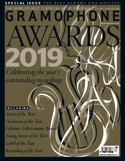Texte paru dans: / Appeared in: |
|
 Recording of the month
Recording of the month |
Outil de traduction (Très approximatif) |
|
Reviewer: Edward Breen Edward Breen is swept away by the concept and thrilling execution of Le Poème Harmonique’s imaginative programme of music from Allegri to Monteverdi
Broadly speaking, there are currently two types of Miserere recordings: choral, King’s College-inspired performances usually situated alongside works by Palestrina and other papal chapel luminaries. Such readings are generally the reserve of English consorts specialising in Renaissance vocal polyphony, such as The Tallis Scholars. Increasingly, however, Allegri’s alignment with the Renaissance is problematised as performers explore the practice of vocal ornamentation that the young Mozart felt no need to notate in his transcription of 1770. In fact there are now several excellent recordings – which I dub ‘nu-wave Allegri’ – employing Baroque-and-beyond ornamentation (not to mention moveable high Cs) as they attempt to recapture the infamous papal chapel practices documented by many a Grand Tour diarist. This latter category already boasts an incredible exploration of 19th-century practice by Ensemble William Byrd (Naïve/Ambronay, 2001) and some delicious Baroque ornamentation from A Sei Voci (Naïve, 9/95). Now Vincent Dumestre joins the fray with his vivid and compelling examination of permeability in the Baroque’s sacred-secular membrane. Viewing ornamentation as a corruption of Allegri’s simple homophonic textures (akin to architectural trompe l’œil) leads him and his performers down some fanciful and spectacular routes. The singing is text-focused from the outset, plainsong is demonstratively declaimed and homophonic passages work up a furtive urgency until they spawn flurries of ornamentation clustered around references to our human vulnerability. The singers of Le Poème Harmonique are clearly accomplished virtuosos, as were the Roman singers of Allegri’s time; their filigree passagework is nimble and flexible; and, importantly, the sopranos never fail to sparkle. These ornamentations, at times, transform quite radically the familiar homophonic architecture of the work: frequently they create mouthwateringly dissonant suspensions the frisson of which is not lost on our modern and conservative ears. This really is an Allegri Miserere to treasure. This superb Miserere performance sits alongside lesser-known and rather ingenious contrafacta. These are works that were originally secular – madrigals and dramatic recitatives – pieces which, in short, had already become famous in their original contexts before being transformed by swapping in a sacred text as the church harnessed the power of the very music of actors and theatres that it sought to suppress. An arresting example of this comes from the mezzo-soprano Eva Zaïcik, who gives an absolutely gripping performance of Luigi Rossi’s Un allato messagier, a poetic lament on the death of Christ which was formed by an anonymous author who re-texted Rossi’s ‘Lament of the Queen of Sweden on the Death of her Husband’ (Un ferito cavalier). Of the secular original I have long admired Suzie Le Blanc and Tragicomedia (Challenge Classics, 2001) for their crisp intensity; and here, in this sacred reworking, Zaïcik maintains a similarly crisp edge to her mourning but constantly undercuts it with deeper, purpler hues. Much encouraged by the superb instrumentalists, this is a performance all enthusiasts of Roman cantatas will find spellbinding. Followed by Monteverdi’s mesmeric Si dolce è’ l martire (a re-texting of Si dolce è’ l tormento) with a sparklingly bittersweet performance from soprano Deborah Cachet, the genius of the programme is clear by the third piece. The instrumentalists excel in Abbatini’s luxuriant little Sinfonia that begins with a beautiful cornet solo by Adrien Mabire. But perhaps nothing better sums up the beguiling sounds of Seicento Italy than Mazzocchi’s Breve è la vita nostra, with its opening trio of outrageously sensuous sopranos weaving a delicious polyphonic web that is then cleverly contrasted with an admonishing fugal figure. This is an album so nuanced you can almost taste it. |
|




